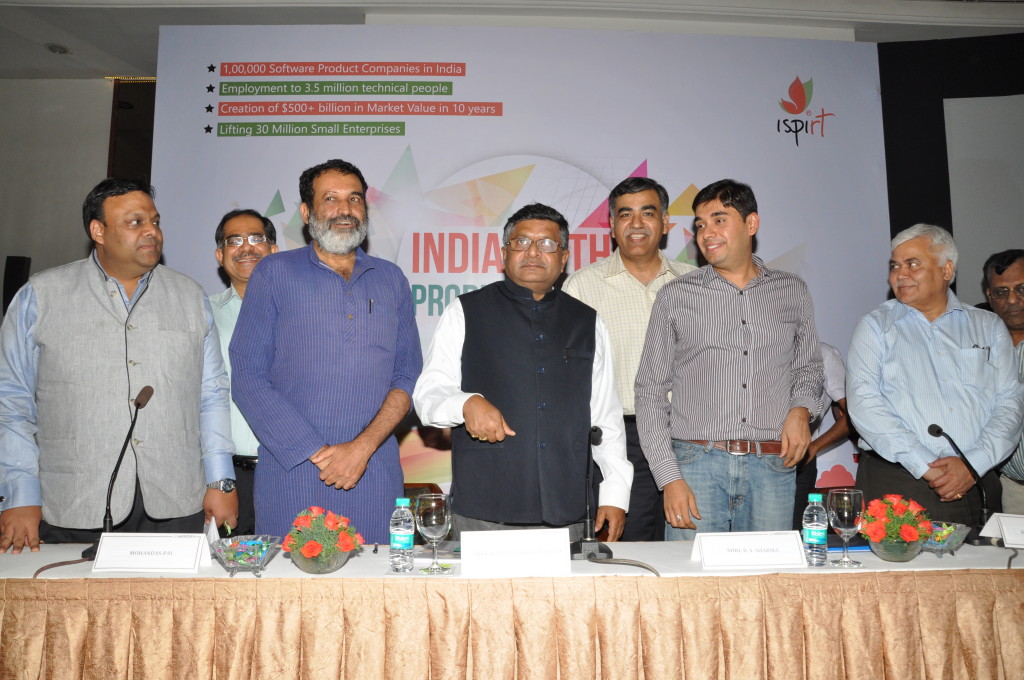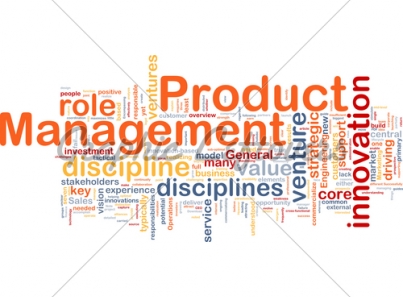A behind the scenes account of how a showcase of 11 disruptive startups was put together in just 100 hours!
If you’re reading this, I’m sure you are a part of the Indian product startup community in one way or the other. And unless you were living under a rock (which is fine, if you were busy hacking away or traveling to sell your product), you wouldn’t have missed that our Hon. IT Minister, Ravi Shankar Prasad was in Bangalore on Tuesday meeting with the product startup community. iSPIRT hosted the “Conclave for India as Product Nation #1″, an open dialogue between the Product industry and the IT Minister.
What made it all the more special was that the he was the first IT Minister to meet with startups and also that he first met with the startups first before meeting officials from his ministry! The Minister met with the industry leaders, gave a patient hearing to the needs of the product startups and also saw presentations from 11 disruptive startups.
And here’s what the minister had to say after meeting with the startups!
Feeling proud of India’s #ITProduct entrepreneurs.I shall be your spokesperson and ambassador.Lets make the India into a #ITProduct nation
— Ravi Shankar Prasad (@rsprasad_bjp) July 1, 2014
So how did we pull this off? And what if I told you that it was all put together in 100 hours. We ourselves cannot quite understand how everything fell into place! But as Sharad often says, when a bunch of passionate volunteers come together towards a common cause, magic just happens. At iSPIRT, we take our volunteering quite seriously. No wonder then, that we actually have open sourced our volunteer model through a whitepaper to help other communities benefit from it!
MoCIT Shri @rsprasad_bjp listening very patiently to Innovators for “India as a Product Nation” #UnleashTheEnergy pic.twitter.com/AQEKLHdSUJ
— Arvind Gupta (@buzzindelhi) July 1, 2014
A text message from Rajan on Saturday morning got me involved. Could we get on a call, he asked. There’s an iSPIRT event scheduled on Tuesday and some help was needed. We spoke and I got to know that there’s an interaction with the IT Minister scheduled on the coming Tuesday. As part of the interaction, we needed to put together a showcase of disruptive product startups to help the Minister get a sense of the kind of impactful work being done and the opportunities ahead. There was list of companies drawn from across various segments and stages, with whom we’d need to connect and get their availability for the event on Tuesday. Tapping into our network of volunteers (many of whom are themselves startup founders and industry leaders), we gathered the contact details of these companies and started reaching out to the companies. These were companies spread across the country and we checked with their founders if they’d be available to present. Based on the availability of teams and the some intense discussion and debate among the Program Managers for the showcase, a short list of the companies presenting on stage was drawn up. The thought process behind the selection of companies was to give the Minister a good view of the breadth (sectors where product startups are making an impact), the depth (companies that have achieved global market/tech leadership) and how far they can grow with sound support from the ecosystem, which includes the government as well. We were immensely privileged to have Mr. Mohandas Pai spare his valuable time for multiple meetings through the whole process and share his inputs on what kind of stories would make the maximum impact.
 Arriving at the shortlist was surely a good beginning. They say well begun is half done. But the tougher half lay ahead! We were already at Monday morning, and within the next 24 hours we had prep up the presenters. Each of the companies were to have a short, crisp presentation with the key points to be covered in under 4 minutes! Shekhar went about this with the precision of a toolmaker, thoroughness of a scientist and the strictness of a school teacher! From putting together notes on what points to cover, iterating multiple times with the presenting companies on their presentations over a sleepless night, to conducting the actual showcase in front of the minister, Shekhar was always on.
Arriving at the shortlist was surely a good beginning. They say well begun is half done. But the tougher half lay ahead! We were already at Monday morning, and within the next 24 hours we had prep up the presenters. Each of the companies were to have a short, crisp presentation with the key points to be covered in under 4 minutes! Shekhar went about this with the precision of a toolmaker, thoroughness of a scientist and the strictness of a school teacher! From putting together notes on what points to cover, iterating multiple times with the presenting companies on their presentations over a sleepless night, to conducting the actual showcase in front of the minister, Shekhar was always on.
@skirani hosting the product presentations to the IT minister @Product_Nation#ispirtpic.twitter.com/CmpKpyAXmM
— Sanat Rao (@sanatrao) July 1, 2014
(That’s me on the left trying to get the slides up!)
The event received some very good coverage in the media. Below are some links:
- Government to encourage startups that meet specific technology
- IT minister to meet Nasscom, iSpirt on Tuesday ahead of Budget
- GovTech India : The New Government is Serious About These 3 Things
- Experts submit blueprint on making India software product nation
- Start-ups need encouragement and we will provide it: Prasad
Here’s hoping that achchhe din are indeed ahead for the Indian software product industry!


